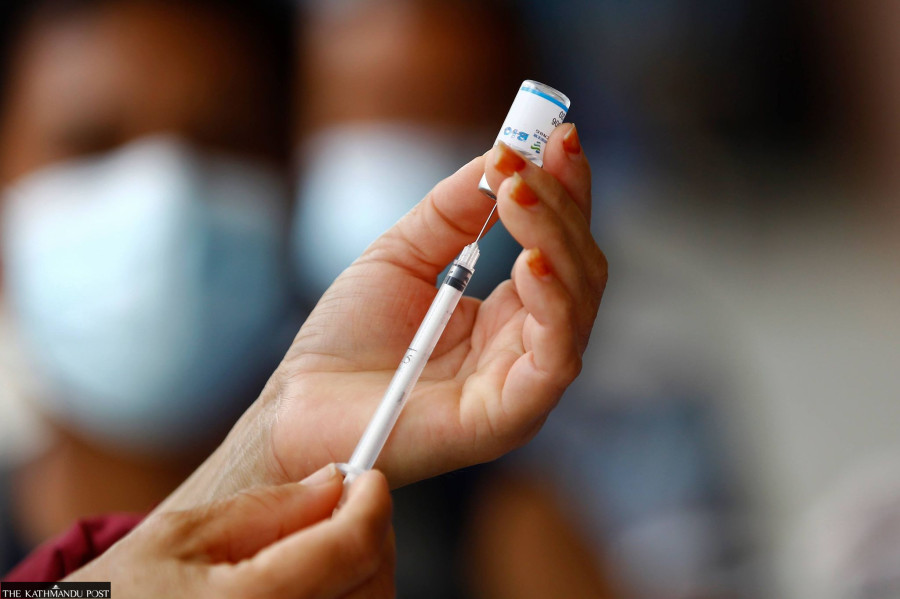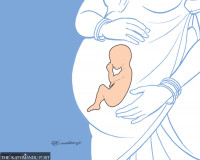Health
Status of Nepal’s Covid cases
Experts caution against complacency and lay emphasis on vaccination.
Arjun Poudel
Nepal’s Covid-19 cases have significantly declined over the past few months. In the past 10 days, the number of new cases has dropped to single digits. Data provided by the Ministry of Health and Population show only 100 people tested positive to the virus in the past 20 days.
Public health experts including epidemiologists, infectious disease experts as well as virologists in Nepal, however, are sceptical of such government data as they think the virus is still spreading in communities.
They warn that a sense of complacency increases the risk of another surge of coronavirus infections. Of late, Nepal confirmed the infection of Omicron’s new sub-variant BM.1.1.3, which is also highly transmissible. Along with BM.1.1.3, BA.2.75.1, BA.2.75.2, and BA.2.75.3 strains have also been detected in the swab samples of infected persons.
With things appearing ‘normal’ there have for months been no measures to curb the spread of the virus. Even testing, contact tracing, and vaccination against Covid-19 stopped months ago.
The World Health Organization on Friday warned that lapses in strategies to tackle Covid-19 this year create the perfect conditions for a deadly new variant to emerge. As things stand, parts of China have already witnessed a rise in such infections.
Here is what you need to know about new variants of the virus and Nepal’s current Covid-19 status.
What is the current status of the pandemic in Nepal?
At present, new daily cases of Covid-19 have declined to a single digit. No death has been reported from Covid-19 infection in the past 41 days. The number of new cases recorded is the lowest since the first wave of the pandemic in May 2020. The number of active cases stood at 92 across the country as of last Monday.
Why is the number of active cases still high compared to the number of infected persons?
Health authorities declare a person Covid-19-free after 10 days of infection without carrying out a second testing. But ongoing declarations of such status by the authorities are not based on facts. In fact, the authorities do not know who is infected and who is not, or the existing condition of infected persons.
“The number of active cases of coronavirus seems high since all health facilities might not send their reports on time,” said Dr Sanjaya Kumar Thakur, spokesperson for the Health Ministry.
Thakur, however, concedes that all infected persons may not need treatment or hospitalisation and it is the responsibility of the agencies concerned to follow up on the health condition of the infected, which is not happening at present from any agency.
Have the number of Covid-19 infections really declined?
Public health experts say the infection rate might have declined to some extent, but the spread of infection has not stopped completely. The detection of new sub-variants of coronavirus in the swab samples of infected persons is proof that the virus is still circulating in the country. Last week, Nepal confirmed the infection of Omicron’s new sub-variant BM.1.1.3, which is also highly transmissible. Along with BM.1.1.3, BA.2.75.1, BA.2.75.2, and BA.2.75.3 have also been detected in the swab samples of the infected persons.
“Neither the infection has gone anywhere nor has the risk of another surge,” said Dr Rajiv Shrestha, an infectious disease expert at Dhulikhel Hospital. “If we stopped testing of Covid-19, we will have no case. Case detection stopped immediately after we stopped testing, but that does not mean we are free from the risk of infection.”
Nepal has recorded almost all variants and sub-variants of the coronavirus detected in any corner of the globe.

How did the authorities handle Covid-19 in 2022?
Nepal witnessed a third wave of the pandemic triggered by the Omicron variant of Covid-19 at the beginning of 2022. Neither the free testing of coronavirus, which had been halted in the midst of the second wave of the pandemic, resumed nor did the contact tracing, which are the basics to control the spread of the deadly disease.
Authorities too, do not think it is necessary to revive quarantine, and isolation for the infected persons and monitor their movements. The Health Ministry counted the number of infected people voluntarily seeking testing and treatment. The experts said the majority of the people who got infected by the omicron variant of the virus during the third wave of the pandemic was due to the apathy of authorities concerned to take measures to curb the spread of the virus.
If so, who is undergoing testing at present?
Only those going abroad and seeking reports of polymerase chain reaction tests are undergoing testing at present. The health authorities have been using the results of such people.
“Without active case surveillance, we cannot derive results or reach any conclusion on the infection rate in the communities,” said Dr Shrestha of Dhulikhel Hospital.
What is Nepal’s current vaccination status?
So far, 22,324,933 people, or 76.5 percent of the total population above five years, have been fully vaccinated [they have received either one dose of Janssen or two doses of other vaccines]. Nepal started a booster campaign on January 17 after the third wave of the pandemic hit the country. Authorities started administering the booster shots to front-line workers, elderly people and those having a compromised immunity first and then to people of other age groups.
According to the Health Ministry, only 7,972,791 people, or around 27.3 percent of the total population, have been administered booster shots so far. The Health Ministry has not updated the vaccination status in its daily reports since September 13, meaning that fresh vaccination has not been going on.
Several studies, including the one carried out in Nepal, shows that the immunity level achieved from vaccination or natural infection wanes after six months of the vaccination or natural infection.
Health authorities had decided to administer second booster shots months ago, but have not started them yet.
Is the risk of a new surge over?
No. Experts say the risk of a new Covid-19 surge has instead increased. Doctors say the apathy of the authorities to enforce the basics—face masks, social distancing, washing hands, testing, contact tracing, and the administration of booster shots—has only increased the risks of a new surge.
“Immunity from natural infection and vaccines have lessened the severity of the disease and deaths from the coronavirus infection,” said Shrestha. “But studies show that this does not last a long time.”
What did the World Health Organisation say about the drop in Covid alertness?
Lapses in strategies to tackle Covid-19 this year continue to create the perfect conditions for a deadly new variant to emerge, WHO Director-General Tedros Adhanom Ghebreyesus said on Friday.
"We are much closer to being able to say that the emergency phase of the pandemic is over, but we're not quite there yet," Reuters reported Tedros as saying. "Gaps in testing... and vaccination are continuing to create the perfect conditions for a new variant of concern to emerge that could cause significant mortality.”




 12.88°C Kathmandu
12.88°C Kathmandu














